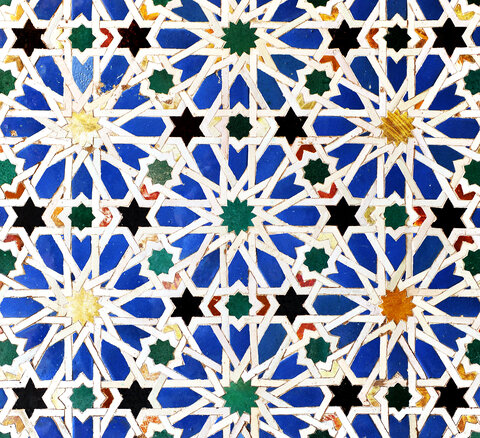arabs and islam.

Arabs in North Africa
The Arabs started their expansion, transmission and dissemination of Islam in the Arabian peninsula, Persia and North Africa after the death of Prophet Muhammad in 632AD1. Under the command of Amr ibn Al As, the Muslims took over Syria, Persia, Alexandria and Cyrenaica. In the later decades they also conquered Tripolitania and Fezzan2.
The capture of Libya, by the Islamic leader Caliph Umar ibn al-Khattab was relatively easy as the region had already been marred by tremendous destruction, caused by earlier invaders, such as the Vandals, who not only looted wealth and destroyed the infrastructure but also destabilized the region politically and administratively. Also, Byzantinian control was tenuous and mainly restricted to a few weak coastal strongholds, which made it easier for the Arabs to invade Pentapolis, in Cyrenaica, which they did in September 642A. It is also reported that movement of the indigenous groups within the region, such as the Berbers, destabilized Libya further3.
Kairouan (Arabic: القيروان Al Qairawān), also known as Kirwan or al-Qayrawan, in Tunisia, is a UNESCO World Heritage site. The city was founded by the Arabs around 670 and became an important centre for Sunni Islamic scholarship and Quranic learning across North Africa.
SPREAD OF ISLAM IN LIBYA.
Jami Ammad Mosque in the Old Medina, Tripoli
The conquering of North Africa by the Arabs in the 7th century, allowed the spread of Islam into the urban areas of Libya. The conversion to Islam was aided by the introduction of imams and missionaries, who mingled with the local population spreading the message of Islam. However, in later decades a much more expansive conversion to the religion was credited to the invasion of Bedouin tribes from Egypt and Arabia, spreading the message of Islam into far flung areas across the Sahara deserts, leading to a widespread conversion of tribal peoples such as the Berbers. Some historians have argued that leaders of the regions were, in some cases, if not receptive of the religion itself, relatively tolerant of it due to certain advantages and perks attached to its acceptance, like beneficial trade agreements7.
Ancient Mosque, Ghadames
Arab rule was easily imposed in the coastal farming areas and on the towns, as the merchants and tradespeople enjoyed the benefits of the Arab patronage. They were also happy with the ability to practice their commerce and trade in security and peace8. Countless locals who converted to Islam, then studied it in depth and became scholars and missionaries.
Another significant reason for Islams spread across Libya, was the fact that the religion accommodated ancient North African customs and beliefs. But, despite Islam becoming a majority religion, many people especially in rural areas continued practicing their own various centuries held beliefs9.
Mosque of Sidi Abdul Salam in Ziltan, Afica, Libya, Al Marqab
FOOTNOTES.
Oyeniyi, Bukola Adeyemi. The History of Libya. Santa Barbara, CA: Greenwood, an imprint of ABC-CLIO, LLC, 2019.
ibid.
ibid.
ibid.
ibid.
ibid.
McLean, John. “World Civilization.” Islamic Conquest of the Maghreb | World Civilization. Accessed December 13, 2020. https://en.wikipedia.org/wiki/Islam_in_Libya
Libya - Islam and the arabs. (n.d.). http://countrystudies.us/libya/9.htm.
Wikimedia Foundation. (2021, June 26). Islam in Libya. Wikipedia. https://en.wikipedia.org/wiki/Islam_in_Libya.




